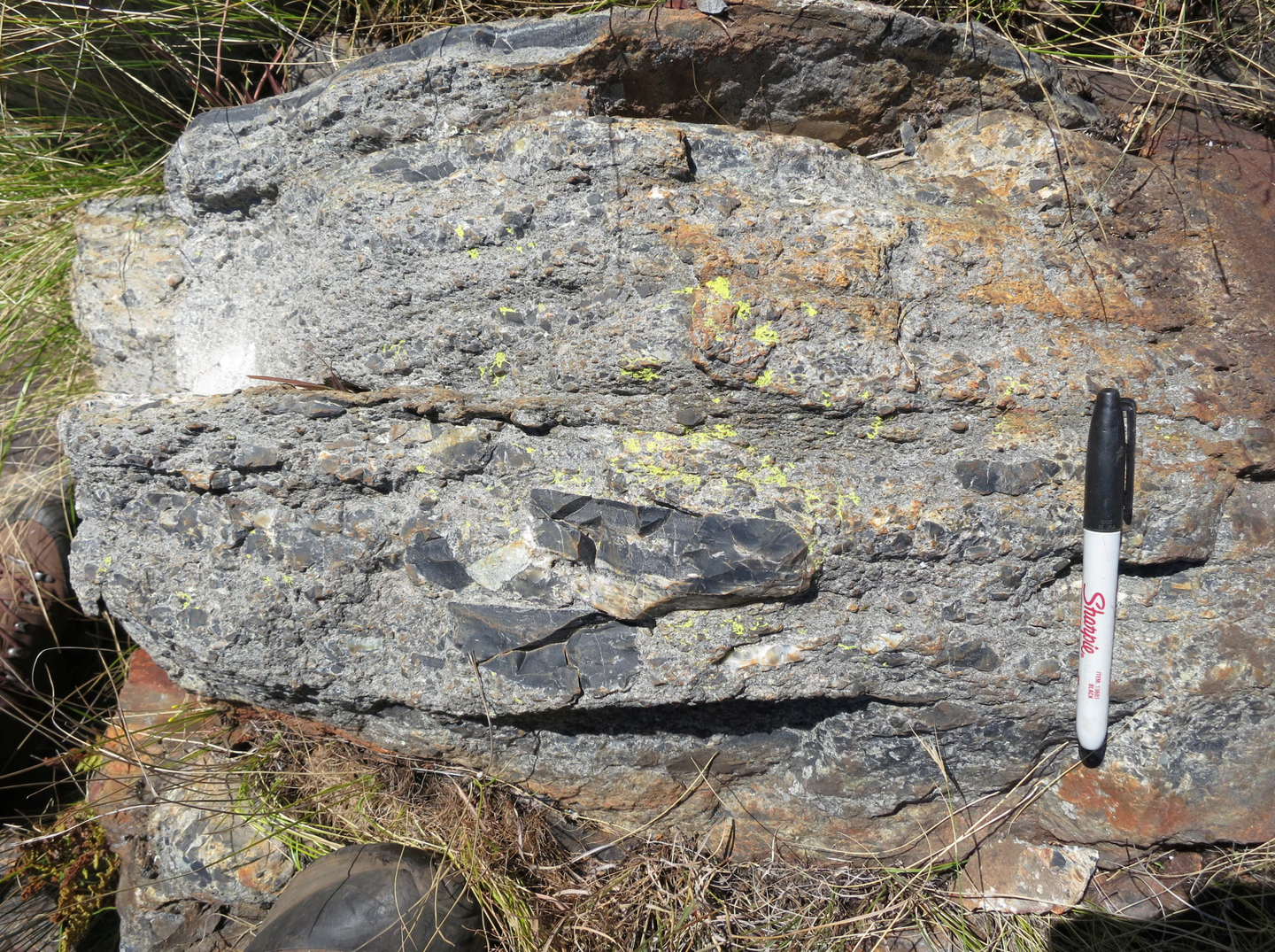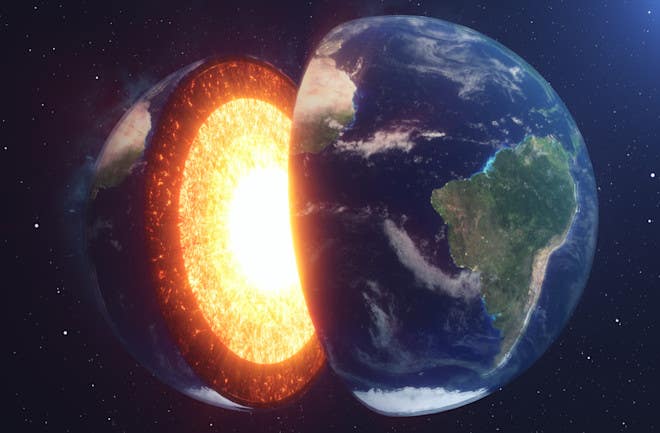Meteor strike may have sparked an explosion of life in the early Earth
A massive meteorite may have helped early microbes thrive by adding phosphorus and iron to Earth’s ancient oceans.

A 3.26-billion-year-old meteorite strike may have fueled microbial growth by delivering key nutrients to Earth’s early oceans. (CREDIT: Nadja Drabon / Handout via REUTERS)
A devastating meteorite strike over three billion years ago may have been just what early life needed to thrive. While it’s easy to imagine such a collision as purely destructive, new research suggests it actually helped support primitive microbes in Earth’s ancient oceans. The event, known as the S2 impact, was caused by a massive space rock that may have been up to 200 times more massive than the one that killed the dinosaurs.
This cosmic crash occurred about 3.26 billion years ago, during a time when Earth was very different. Oceans covered most of the planet. There was little land, no plants, and almost no free oxygen. Only simple life forms, like microbes, existed. In this watery world, nutrients were scarce. But one of the rarest and most vital elements for life—phosphorus—was delivered in great supply by the impact.
A Massive Collision with Far-Reaching Effects
The meteorite that caused the S2 impact was between 37 and 58 kilometers wide. That’s large enough to leave a crater stretching from New York City to northern Maine. Its force caused a global dust cloud that likely turned the skies black within hours. Ocean water near the surface may have boiled from the heat. Tsunamis swept across coastlines, and the landscape faced severe shaking.
"At this time, Earth was something of a water world,” said Andrew Knoll, one of the study’s co-authors. “There was essentially no oxygen gas in the atmosphere and oceans, and no cells with nuclei."
The crash vaporized rock and ocean water, launching dust and gas into the sky. That material blocked sunlight and cooled the planet, similar to the way the Chicxulub impact darkened the sky and led to the extinction of the dinosaurs 66 million years ago. But the S2 impact was different in one important way: it may have helped life bounce back faster—and stronger.
A Surprise Source of Life-Giving Nutrients
Phosphorus, a key ingredient for DNA and RNA, was extremely limited in Earth’s early oceans. Microbial life would have struggled to grow without it. But the S2 meteorite brought large amounts of this rare nutrient. It acted like a “fertilizer bomb,” according to lead researcher Nadja Drabon, a professor at Harvard’s Department of Earth and Planetary Sciences.
“We think of meteorite impacts as being disastrous,” she said. “But 3.2 billion years ago, life was a lot simpler.”
Related Stories
The study, published in the journal PNAS Earth, Atmospheric, and Planetary Sciences, found that the meteorite not only added phosphorus but also stirred up the deep ocean. Iron-rich waters from the depths were mixed into shallow regions by giant tsunami waves triggered by the impact. Iron serves as an energy source for certain microbes, especially those that cycle iron to survive.
“Imagine these impacts to be giant fertilizer bombs,” Drabon said. “This would have really helped life flourish.”
The result was an explosion in microbial activity. Once the atmosphere cleared and surface conditions stabilized, microbial communities came back quickly—and likely even stronger than before.
“Life not only recovered quickly once conditions returned to normal within a few years to decades, it actually thrived,” Drabon said.
Unlocking Ancient Clues from South African Rocks
To study the S2 impact, Drabon and her team traveled to South Africa’s Barberton Greenstone Belt. This region holds some of the oldest and best-preserved volcanic and sedimentary rocks on Earth. By analyzing these rocks, researchers can peer into the planet’s distant past.
Two key sites, informally known as “Umbaumba” and “Bruce’s Hill,” provided vital evidence. Layers of sediment in these locations revealed chemical signatures from the impact, including trace elements from the meteorite, melted rock structures, and pieces of seabed tossed into the mix by the tsunami.
The researchers used advanced geochemical methods to study carbon isotopes and other markers in the rocks. They found siderites—a type of iron carbonate—closely associated with organic matter. These minerals had light and variable carbon isotope values, a sign of microbial iron cycling in the aftermath of the impact.
“It was a bit of a challenging question because the concentrations were very small,” said Stefano Bernasconi of ETH Zurich, who analyzed the carbon isotopes. He noted that the team had to grind the rock samples to extract grains of carbonate trapped in minerals.
The chemical makeup of the sediment suggested not just destruction, but rebirth. Nutrient levels rose. Iron and phosphorus created ideal conditions for microbial blooms. In shallow areas, phototrophic microbes—those that rely on sunlight—likely died off due to darkness and heat. But in deeper waters and over time, iron-cycling microbes took their place.
More Impacts, More Discoveries Ahead
While the S2 impact is one of the most thoroughly studied events of its kind, it’s not the only ancient collision recorded in the Barberton Belt. Drabon pointed out that there’s evidence of at least seven other giant impacts in the same region, all from the Archean Eon.
“These impacts are either the same size or bigger than the one that killed the dinosaurs,” Drabon said. “There’s plenty of opportunity now to look at other impact events and see how those affected the environment and life.”
Her team’s findings open the door to new research into how ancient meteorites shaped life on Earth. They plan to search for other chemical signs of early life, looking at how microbes may have responded to the different elements added to the oceans after each strike.
Though large meteorite impacts often bring destruction, they also carry the ingredients that make life possible. In the early days of our planet, before complex plants or animals existed, these violent space rocks may have played a key role in shaping a world where life could take root.
The Paradox of Cosmic Catastrophe
Today, the idea of a meteorite crashing into Earth brings fear and images of extinction. But billions of years ago, in a world ruled by single-celled organisms, those impacts may have been just what life needed. The same event that boiled oceans and blocked sunlight also delivered phosphorus, stirred up iron, and sparked a microbial comeback.
While the Chicxulub impact led to the end of the dinosaurs, the S2 meteorite may have helped life begin to truly flourish. What seems like destruction on the surface can sometimes hide the seeds of creation.
As Drabon put it: “Early life was resilient in the face of a giant impact.”
Note: The article above provided above by The Brighter Side of News.
Like these kind of feel good stories? Get The Brighter Side of News' newsletter.
Joshua Shavit
Science & Technology Writer | AI and Robotics Reporter
Joshua Shavit is a Los Angeles-based science and technology writer with a passion for exploring the breakthroughs shaping the future. As a contributor to The Brighter Side of News, he focuses on positive and transformative advancements in AI, technology, physics, engineering, robotics and space science. Joshua is currently working towards a Bachelor of Science in Business Administration at the University of California, Berkeley. He combines his academic background with a talent for storytelling, making complex scientific discoveries engaging and accessible. His work highlights the innovators behind the ideas, bringing readers closer to the people driving progress.



